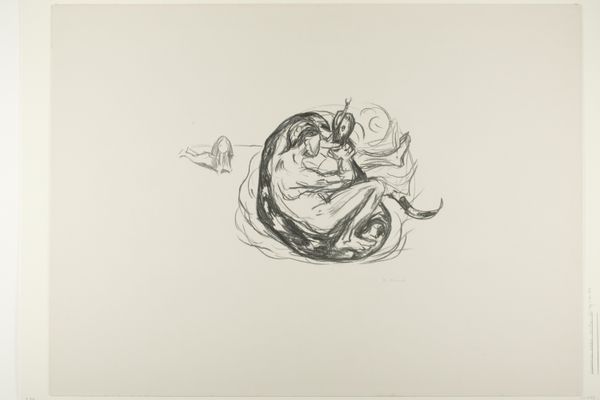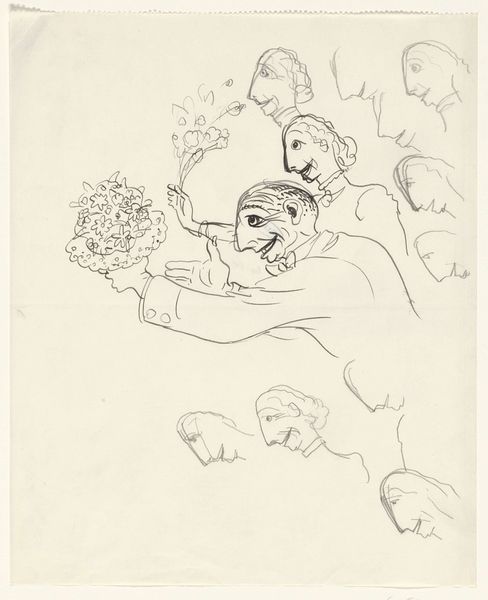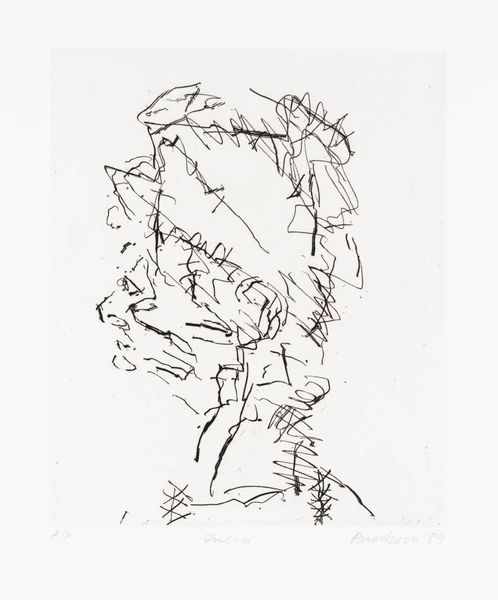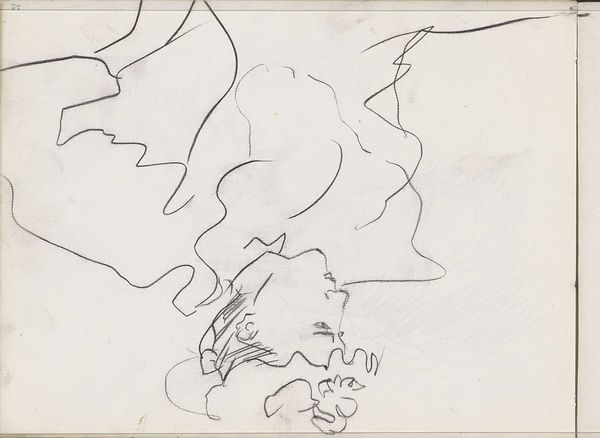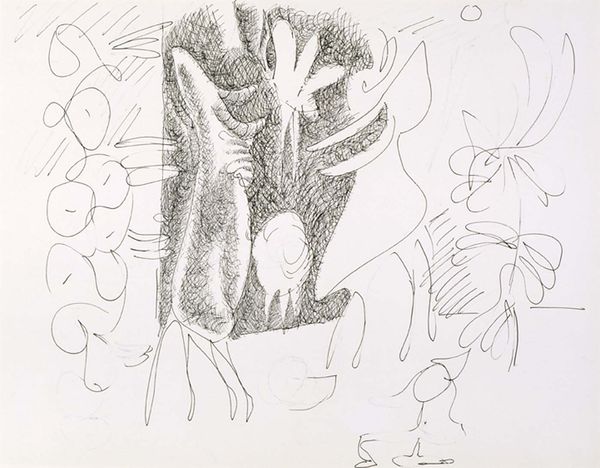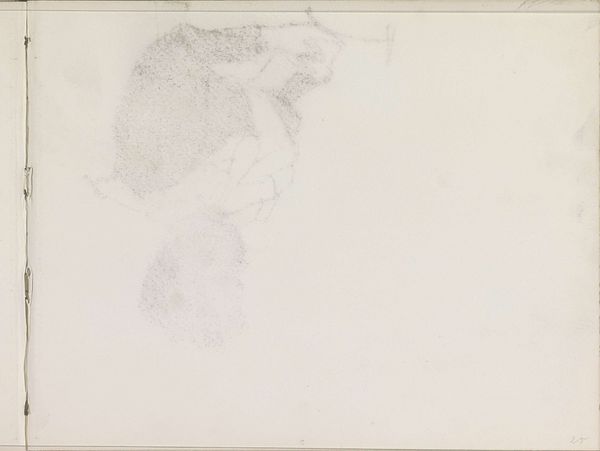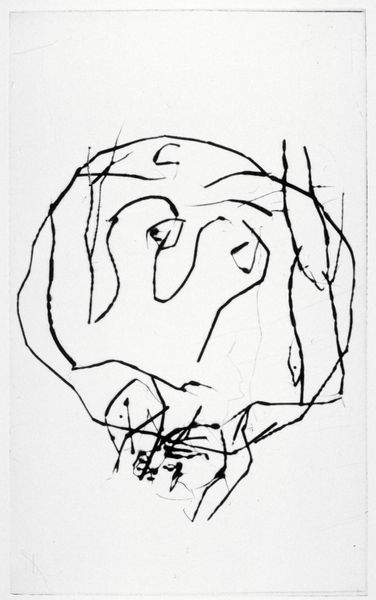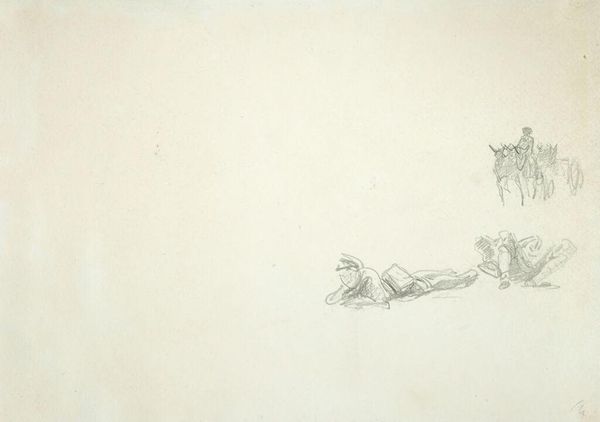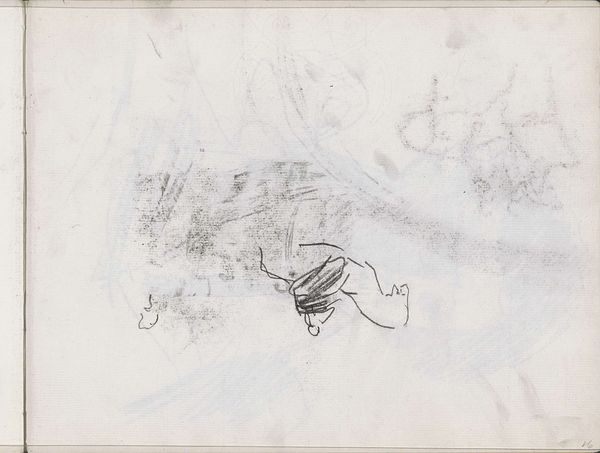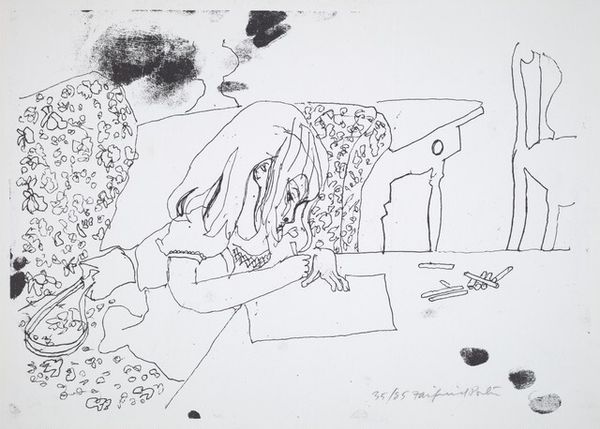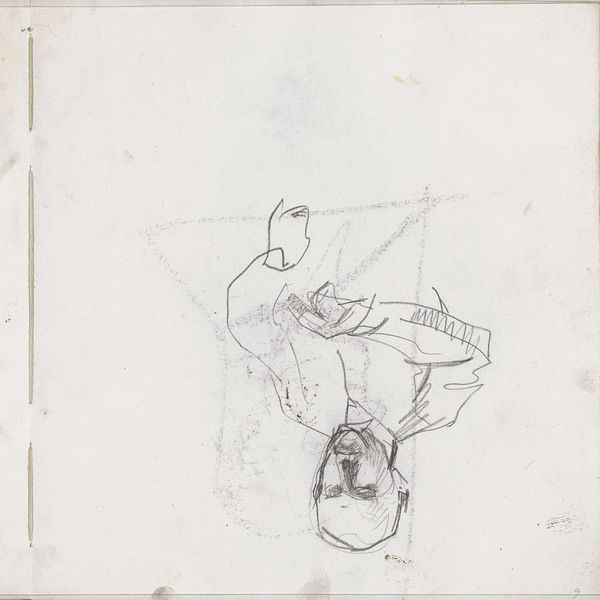
drawing, paper, pencil
#
drawing
#
conceptual-art
#
landscape
#
paper
#
geometric
#
pencil
#
sketchbook drawing
Dimensions: overall: 21 x 29.2 cm (8 1/4 x 11 1/2 in.)
Copyright: National Gallery of Art: CC0 1.0
Curator: Let’s consider this drawing by Andy Goldsworthy titled “Clay Boulder, Unattached.” Editor: My initial feeling is one of fragility, surprisingly. Despite the title suggesting a robust boulder, the sketch lines give it a delicate, almost temporary presence. Curator: That tension is interesting, isn't it? Goldsworthy often documented his ephemeral sculptures in photographs, and in this case, a drawing rendered with pencil on paper. This act of documentation has transformed how we see environmental art; giving prominence to temporary pieces that wouldn't necessarily have visibility within gallery spaces. Editor: Exactly! It shifts the power dynamic. Historically, landscape art romanticized nature to showcase dominion, often echoing colonial pursuits. Goldsworthy seems to approach with far more empathy and his sketchbook drawing offers more direct, unaltered record than an idealized painting. What do you see happening within its reception? Curator: Well, because this wasn't originally presented in gallery spaces, the very notion of "reception" requires a reassessment. I suppose it might depend on the audience. Academics might value it as a vital tool in our evolving discourse on the Anthropocene, noting the political shifts around eco-awareness over the decades. Art collectors see another story: his documentation transforms environmental art into a tangible commodity, of course. Editor: Absolutely, there’s always a degree of institutional assimilation at play. Goldsworthy's drawing seems deceptively simple but embodies complex questions. We’re reminded about our own footprint and perhaps that a sense of stewardship requires active dismantling of previously held, idealized hierarchies. Curator: Indeed, by foregrounding transient, nature-led experiences and art documentation practices, we have seen shifts in art production but also its presentation. We ask questions around what role gallery spaces play in shaping perceptions of what should and shouldn't endure. Editor: Agreed. I think considering this humble sketchbook drawing allows us to explore some profound paradigm shifts. It isn't only about representation, it's about being in dialogue.
Comments
No comments
Be the first to comment and join the conversation on the ultimate creative platform.
